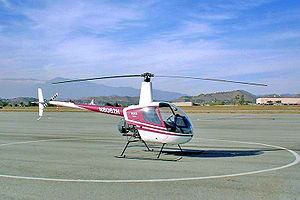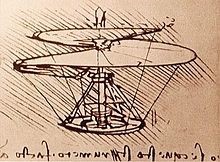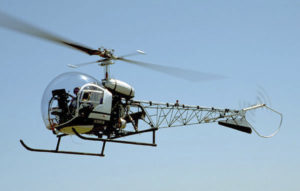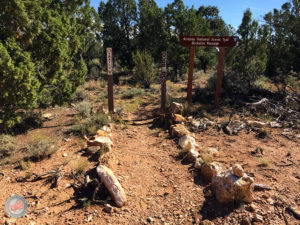R.A. Andrade's Blog, page 7
June 4, 2017
Acid Rain
This post is not about a new novel, movie, game, or action figure. It is about those water droplets that fall from the sky, commonly known as rain. The industrial revolution (1760 – 1840) brought dramatic improvements for the quality of life for many people, but it also precipitated new manmade pollutants into the atmosphere. As a byproduct of the burning of fossil fuels, gases such as sulphur dioxide and nitrogen oxides react with droplets of water in the clouds to form sulphuric and nitric acids. The rain from these clouds falls as a very weak acid which is known as acid rain. In Manchester, England, Robert Angus Smith first showed the relationship between atmospheric pollution and acid rain. Although discovered in 1852, he it wasn’t until 1872 that he coined the term, “acid rain.”
Studies concerning acid rain effects on plants and trees date back to 1963 which revealed altered compositions of water vapors rising in the atmosphere. In recent studies made by scientists from the University of Vermont, wood cores showed rings forum in more that a hundred trees of varying species began a growth decline in the 1950’s. One of the most significant result of acid rain effects in the United States are the continuing decline of red spruce trees found in Adirondack Mountains, New York and the Green Mountains of Vermont. Those in the White Mountains of New Hampshire have already died. The University of Vermont study reported starling evidence of tree damage. Conifers are most affected because the needles are bathed in acid droplets all year. Other trees drop their leaves. Measurements of the total biomass in the balsam fir has declined 20% from 1965 to 1983. The red spruce declined 73% in the same time period. Population of lower mountain sugar maples and beech trees dropped 25%. For trees subjected to acid rain falls, the acid deposits strip the leaves and needles of their calcium contents. Indirect effects of acid rainfall on fertile soil also cause plants to lose their foliage, resulting in plants and trees withering and dying.
The Good News
Both Europe and the United States adopted clean air act amendments in the 1070’s. Those actions required filters in factories and reduced sulpher and nitrogen emission levels on vehicles. New research shows that human pollution of the atmosphere with acid is now almost back to the level that it was before the major industrialization in the 1930’s. These results are from studies of the Greenland ice sheet by spearheaded by Helle Astrid Kjaer of the Niels Bohr Institute, University of Copenhagen.
Although damage from the effects of acid rain will continue to plague the planet for decades to come, it is a hopeful sign. It is one area of human assault on the environment where mitigation has begun.
The post Acid Rain appeared first on R. A. Andrade.
May 30, 2017
Porcupines and Meatballs
The North American porcupine is well known for their dangerous, needle-like quills that can come out and penetrate the hide of unwanted visitors. The quills are hairs with barbed tips, solid at the tip and base, but hollow for most of the shaft. A porcupine has quills on all parts of its body except the stomach, totaling about 30,000 in number. As you can imagine, it uses its quills for defense, but they cannot be thrown at an enemy as was once believed by many. When a predator approaches, the porcupine will turn its back, raise the quills, lashing out with its tail. If an animal is hit with the quills, they become embedded in the animal’s skin, held firm by barbs that can expand with body heat. Porcupine quills have recently inspired a new type of hypodermic needle.
The porcupine is of the rodent family, being the third largest. The Latin name for the animal translates as “quill pig.” There are many species the world over, but the North American variety can be found in forested and wooded areas in most of Canada and the western United States south to Mexico. In the eastern United States, it be found in Wisconsin, Michigan, Pennsylvania, New York, and New England. They are about 25 to 36 inches long and weigh up to 40 pounds. Porcupines are herbivores, eating leaves, herbs, twigs, and green plants such as clover. In the winter, they may eat bark. Many times when they are close to humans, they are seeking salt. The may gnaw on paint, plywood, doors, clothing, and more if they can get salt from them. They are mostly nocturnal and are exceptional climbers and swimmers. The hollow quills actually help their buoyancy. They have relatively high lifespan for rodents, one individual living to 27 years.
During researching facts about porcupines, I stumbled across the food subject of “Porcupine Meatballs.” Although my initial thoughts were…people really make meatballs out of porcupine meat?…I happily discovered the meat ingredient is ground beef, not ground porcupine. Since I haven’t attempted the recipe as of this post, I’m guessing the porcupine reference correlates to a prickly surface. Anyway, here is one of the recipes I found from food.com:
Porcupine Meatballs
Ingredients
1 lb ground beef
¼ cup long grain rice, uncooked (I think these are the quills)
1 egg, slightly beaten
1 tablespoon fresh parsley, snipped
2 tablespoons onions, finely chopped
½ teaspoon salt
1 dash pepper
1 (10 ½ ounce) can tomato soup, divided
1 teaspoon Worcestershire sauce
Directions
Combine ground beef, rice, egg, parsley, onion, salt, pepper, and ¼ cup of the tomato soup. Mix well.
Shape mixture into about 20 small meatballs.
Place the meatballs in a large skillet.
Mix remainder of soup, water, and Worcestershire in a small bowl; pour over meatballs.
Bring to a boil.
Reduce heat; cover; and simmer 40 minutes or until meatballs are cooked and rice is soft, stirring often.
Now you invite your friends or enemies to eat porcupine, quills and all!!!!
The post Porcupines and Meatballs appeared first on R. A. Andrade.
May 26, 2017
Dogs Playing Poker
I am assuming many reading this post recall seeing a print of a painting depicting dogs playing poker. They are unlikely to be found displayed in homes adorned with paintings in original oils and watercolors, and a few Monet prints. Dogs Playing Poker prints more likely decorate a wall in what some consider low-class places like seedy bars, run down trailer parks, messy college dorm rooms, and pool halls. Sign me up…I always wanted a copy but was dissuaded from it in the past by outside influences with comments like, “Oh…that’s tacky.” Next time I find one for sale, I just might make a purchase.
Dogs Playing Poker actually references a 1984 painting, a series of sixteen oil paintings, and a 1910 painting by Cassius Marcellus Coolidge. Browne & Bigelow contracted the sixteen paintings to advertise cigars. Only nine of the sixteen-piece collection shows dogs playing poker. The others, involved dogs in sports, dancing, and other activities. The most famous of the series, A Friend In Need, one dog is shown passing and Ace to another dog that needs four Aces. The Paintings have been used in TV shows including, Cheers, Roseanne, The Simpsons, Family Guy, NewsRadio, That ‘70s Show, White Collar, and Boy Meets World. They have also been used in movies, a music album cover, songs, comic strips, and video games. Experts forecasted that two of the paintings would sell in the $30,000 to $50,000 range at a New York art auction in 2005. CNN headlines reported them “fetching a staggering $590,400” the next day. In 2015, Coolidge’s masterpiece, Poker Game, sold for $658,000 through Southeby’s.
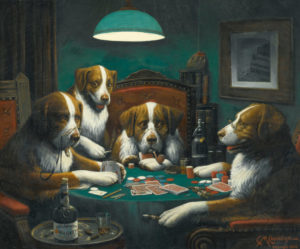 Poker Game
Poker GameCoolidge went by the nickname “Cash” and has been described as a hustler whose life showed many career changes. He worked painting street signs and houses. He tried other professions like druggist, art teaching, cartoonist, wrote an opera, and started his own bank and newspaper. The invention of life-size boardwalk cutouts of characters or animals one sticks their head through a hole to be photographed is credited to Coolidge. Art critics have long sneered at the commissioned works Coolidge painted. Even his 1934 obituary described his greatest artistic accomplishment as “painted many pictures of dogs.” Chrysler Museum of Art in Norfolk, Virginia issued a press release proclaiming an intent to exhibit Dogs Playing Poker. It was followed by an editor’s note which announced, “April Fool!” Coolidge’s wife and daughter were unimpressed by Dogs Playing Poker. In 2002, 92-year-old daughter Gertrude told the New York Times that she and her mother were more cat lovers, but she admitted, “You can’t imagine a cat playing poker. It doesn’t seem to go.”
Although many critics dismissed Coolidge’s work as trivial, it has been proposed that Dogs Playing Poker was a satirical series intended to mock the upper class for their excesses and attitudes.
The post Dogs Playing Poker appeared first on R. A. Andrade.
May 22, 2017
White Birch Tree
Walks in the woods on a warm, sunny, fall days are one of my favorite experiences. If the trail winds through trees that include white birch, it transforms into the mystical realm. No words, photographs, video or other forms of art can capture the human perception using all your senses. The aroma of dry leaves, mixed with the caress of a soft fall breeze on your skin, the faint sounds reaching your ears of falling leaves landing on the forest floor. All those wonders are background to the visual deluge of a pallet of radiant oranges, yellows, reds, greens accentuated by the glowing white bark of the white birch. Those days remain burned in your brain for a lifetime. It approaches falling in love without the stormy ecstasy of it, but like love, impossible to describe. The closest I can get with words is “serene rapture.”
 Photo by Greg A. Hartford
Photo by Greg A. HartfordPhoto From Greg A. Hartford’s AcadiaMagic website
During the last Ice Age, a vast White Spruce forest covered the Great Plains and eastern United States just south of the tundra bordering the great ice sheets. The White Birch, along with the spruce were some of the earliest species to follow the retreating ice sheets northward, reaching the Canadian border soon after the ice retreated.
The White Birch is a small to medium sized deciduous tree, which usually grows to approximately 70 feet in height, although some at 130 feet are known. The average life expectancy is about 60 to 70 years, which is short for trees. It is recognized by its bark, which is bright white, and smooth with small black marks and scars. It often separates into papery strips and is easily peeled off in sheets. It is native to North America, from Alaska, throughout Canada, and as far south as North Carolina.
Other Common Names are Canoe Birch, Paper Birch, and Silver Birch
New Hampshire state tree
Saskatchewan provincial tree
Sap can be boiled down to produce birch syrup, and also can be used for wine, beer, and medicinal tonics
Wood makes excellent high-yielding fire wood, lumber for furniture, flooring, and popsicle sticks
Native Americans used White Birch bark to cover canoes, make baskets, baby carriers, mats, torches and moose calls. The wood was strong and flexible so they used it to fashion spears, bows and arrows, snowshoes, and sleds.
Although moose and white-tailed deer will eat the leaves and tender shoots of the White Birch, it is not their favorite food. Porcupines like to eat the bark and rabbits eat the seedlings and young saplings. Beavers also eat it although generally prefer aspen, while willow and White Birch are second choices. Yellow-bellied sapsuckers will peck little holes in the bark and feed on the sap. Hummingbirds and squirrels also drink the sap from the sap wells made by the sapsuckers.
The post White Birch Tree appeared first on R. A. Andrade.
May 19, 2017
Book Giveaway
This post deviates from the general theme of other posts on this site for the purposes of a book giveaway.
The challenge: To be the first to determine the theme of the posts. All posts have followed a theme of topics except this one and the post on The Arizona Trail. That one followed up on a comment on the Long Trail post.
The prize: A copy of either The Field Trip or Darkness. The winner chooses their preference.
The Method: Enter your guess on the contact form on this website. The first with the correct answer will be notified.
The post Book Giveaway appeared first on R. A. Andrade.
May 18, 2017
Michigan Dogman
I think myths, legends, UFO sightings, and other unexplained phenomena are both intriguing and fun. I want to believe because it would be exciting, but have not been convinced thus far…although, I accept the possibilities, so am always open to additional supporting evidence. Growing up, I devoured stories and books about the classics like Big Foot; Loch Ness Monster, alien bodies at Roswell, and ancient astronauts. Later in life, I discovered there were many more less-known legends and myths. Crossing from Vermont to New York by car-ferry, I became ecstatic to find out that a Lake Champlain Monster existed. After purchasing a book on “Champ” (that is its name to those in the know) in the ship gift shop, I spent the remainder of the time crossing to New York, scanning the waters with camera in hand for any glimpse of Champ. It didn’t happen. In the years following, I continued uncovering new legends like the Chupacabra, Jersey Devil, and the Michigan Dogman. This post is about Dogman.
Although living in Michigan for several years, I was oblivious to this lore until a song about it named Legend reached my ears in the late 80’s. Most information I dug up about this creature related to stories about firsthand sightings, the song, and the movie. I will focus on the legend itself.
The Dogman is described as being about seven feet tall with blue, red, or yellow eyes. It is a canine-like, bipedal creature having the torso of a man and a dog’s head with a frightening howl sounding like a human scream. The first reported encounter with Dogman occurred in 1887 in Wexford County, Michigan when two lumberjacks saw the creature. Since that time, reports of Dogman sightings seem to occur on a ten-year cycle. It has been spotted in Michigan’s Upper Peninsula, and may also be the same creature reported along the Lake Michigan shoreline in Wisconsin.
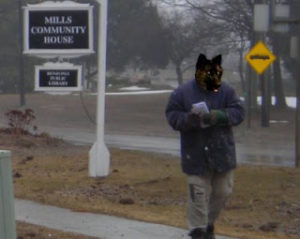 Dogman At Home
Dogman At HomeThe Dogman legend may predate the Wexford County occurrence by hundreds of years since there are Native American tribes in the same region that have tales about half-wolf, half-man beasts that walked on two legs. Speculation on the possible connection between a Menomini legend and Dogman can be found on Chad Stuemke website.
If you are interested in Dogman, a good resource is LindaGodfrey’s Blog.
The post Michigan Dogman appeared first on R. A. Andrade.
May 15, 2017
It Goes Straight UP
Helicopters
Learning to Fly One
A student received a gift certificate for helicopter flying lessons for his birthday. One day he was bored and decided to take advantage of the opportunity. When he arrived at the place, the instructor said, “Well, there’s only one helicopter here and it only has one seat. If I show you how to do it, do you mind going up solo?”
“Of course not! I can handle it,” the student said.
Well, he showed him the inner workings of the helicopter and sent him on his way, only asking that he radio in every 400 feet just to make sure everything was going smoothly.
At 400 feet, he radioed in and said, “Wow! This is so much fun!”
At 800 feet, he radioed in again, saying, “This is pretty easy, I can do this all day!”
At 1,200 feet, the student didn’t radio in. He waited and waited, and didn’t hear from the student. Seconds later, he heard a crash in the field next to the station. He ran out to see what happened and discovered the student had crashed.
Luckily, he survived. “What happened?” the instructor exclaimed.
“Well, I was doing fine, but I started to get cold so I just turned off the big fan!”
Civilian Training Helicopters
The Robinson 22 dominates the civilian training market and is frequently used for livestock management on large ranches in North America and Australia.
History
The first references for vertical flight came from China and since around 400 BC, Chinese children played with bamboo flying toys which comprises of a stick and a rotor.
Leonardo da Vinci created a design for a machine described as an aerial screw. His notes indicated he build small flying models.
The first piloted helicopter was invented by Paul Cornu in France in 1907. It flew to the towering altitude of 5 to 7 feet for less than a minute. Another French inventor, Etienne Oehmichen was more successful. His attempt at a helicopter flew one over half a mile (1 kilometer) in 1921 but still at only of 6 feet above the ground.
Heinrich Focke at Focke-Wulf in Germany helped develop the first practical helicopter, the Focke-Wulf Fw 61. It first flew in 1936, breaking all helicopter distance, speed, and altitude records the following year. Then came Igor Sikorsky, considered to be the father of helicopters because his was the first successful helicopter. Russian born Sikorsky began work on helicopters around 1910, and by 1940 his successful VS-300 became the model for all modern single rotor helicopters. He also designed and built the first military helicopter, the XR-4 for the U.S. Army.
Bell Aircraft hired Arthur Young to help build a helicopter using Young’s unique two blade design. His ideas eventually led to the Bell 47 in 1946, which became the first helicopter certified for civilian use in the United States. Produced in many countries, the Bell 47 was the most popular helicopter model for nearly 30 years.
The post It Goes Straight UP appeared first on R. A. Andrade.
May 12, 2017
Are Animals More Attracted to Some People?
I tried finding scientific studies on whether or not some people attract stray animals with little success. Plenty of studies and opinions on attracting stray people, but not much on animals. But, after reading so many experiences by people, or stories about witnessing the way some people attract animals, I make the declaration, IT IS TRUE, SOME PEOPLE NATURALLY HAVE AN AFFINITY WITH ANIMALS. It’s a scientific fact.
Here are a list of reasons:
Appearance. The type of clothing a person usually wears-An animal probably thinks, “That dude or dudette dresses really cool. I think I’ll hang around so I’ll be with the in-crowd.”
Body language and tone of voice. Probably the most important factor, animals pick up clues by movements and voice on a person’s gentleness, fear, and threat towards it. For example, if an animal senses fear, it thinks, “Let’s see how fast I can make this human run so I’ll look good to my friends.”
Scent. Individuals have different smells that are also affected by their emotional reaction to the animal. This has some overlap with body language and many animals have a keen sense of smell. This characteristic is also enhanced if the person is carrying fish, t-bone steak, or a dead squirrel in their purse or pocket.
Understanding. Some people just naturally or through experience, know how to behave with certain types of animals. They can tell if an animal wants to be touched or not, or if the animal is frightened. As an example, if confronting an escaped tiger at a shopping mall, the understanding human would decide to run and pray simultaneously. The right choice.
And finally, there’s individuals who attract animals, children, and neurotic people. I have no clue as to what’s going on there.
I hope this post has been educational to some. I’d be interested if anyone can shed some light on the last point.
The post Are Animals More Attracted to Some People? appeared first on R. A. Andrade.
May 9, 2017
The Arizona Trail
This post is a result of a comment on The Long Trail post that I thought might be of interest…so it is not in keeping with the general theme of my posts. Anyone reading the posts on this site may be thinking, “What the hell…I don’t see any theme.” Well there is and the first person who identifies the theme will win a free copy of The Field Trip or another book by Selladore Press, Darkness by Erin Eveland.
The Arizona Trail began with the imagination of Dale Shewalter who envisioned a cross-Arizona trail. While working as a Flagstaff schoolteacher in 1985, he began to explore the possibilities of such a trail. Evaluating which existing trails could be interconnected by new trails to traverse Arizona’s diverse landscapes, the journey to today’s Arizona Trail began in earnest.
The Arizona Trail became one of the premier long distance trails in the country. The 800 mile trail was completed at the end of 2011. It is designed as a primitive trail that highlights the wide variety of mountain ranges and ecosystems of Arizona.
I found a nice description of the emotional feel of the trail from an individual who posted this on the “Earn Your Bacon” website in 2016:
“The Arizona Trail is a feast of nature. Meager deserts stretch out for miles and all of a sudden change to pine forests. Grasslands rise and disappear behind the next mountain. Rarely lakes reach to the trail and give you a deceptive security, due to the constant lack of water. Canyons open up in front of you and close behind you. In the same time of the year, at its lowest point, the heat will make your sweat run, while you might get snow on the mountaintops or at the North Rim.”
More information can be found with the Arizona Trail Organization.
The post The Arizona Trail appeared first on R. A. Andrade.
May 7, 2017
New England Proverbs
Red sky in morning, sailors take warning. Red sky at night, sailors’ delight.
If you wet your feet with dew in the morning, you may keep them dry for the rest of the day.
When the bubbles of coffee collect in the center of the cup, expect fair weather. When they adhere to the cup, forming a ring, expect rain. If the bubbles separate without assuming a fixed position, expect changing weather.
You can’t keep trouble from coming, but you don’t have to give it a chair.
The world is your cow. But you have to do the milking.
Take off you flannels before May , and you’ll have doctors bills to pay.
The quickest way to do many things is to do one thing at a time.
The post New England Proverbs appeared first on R. A. Andrade.






